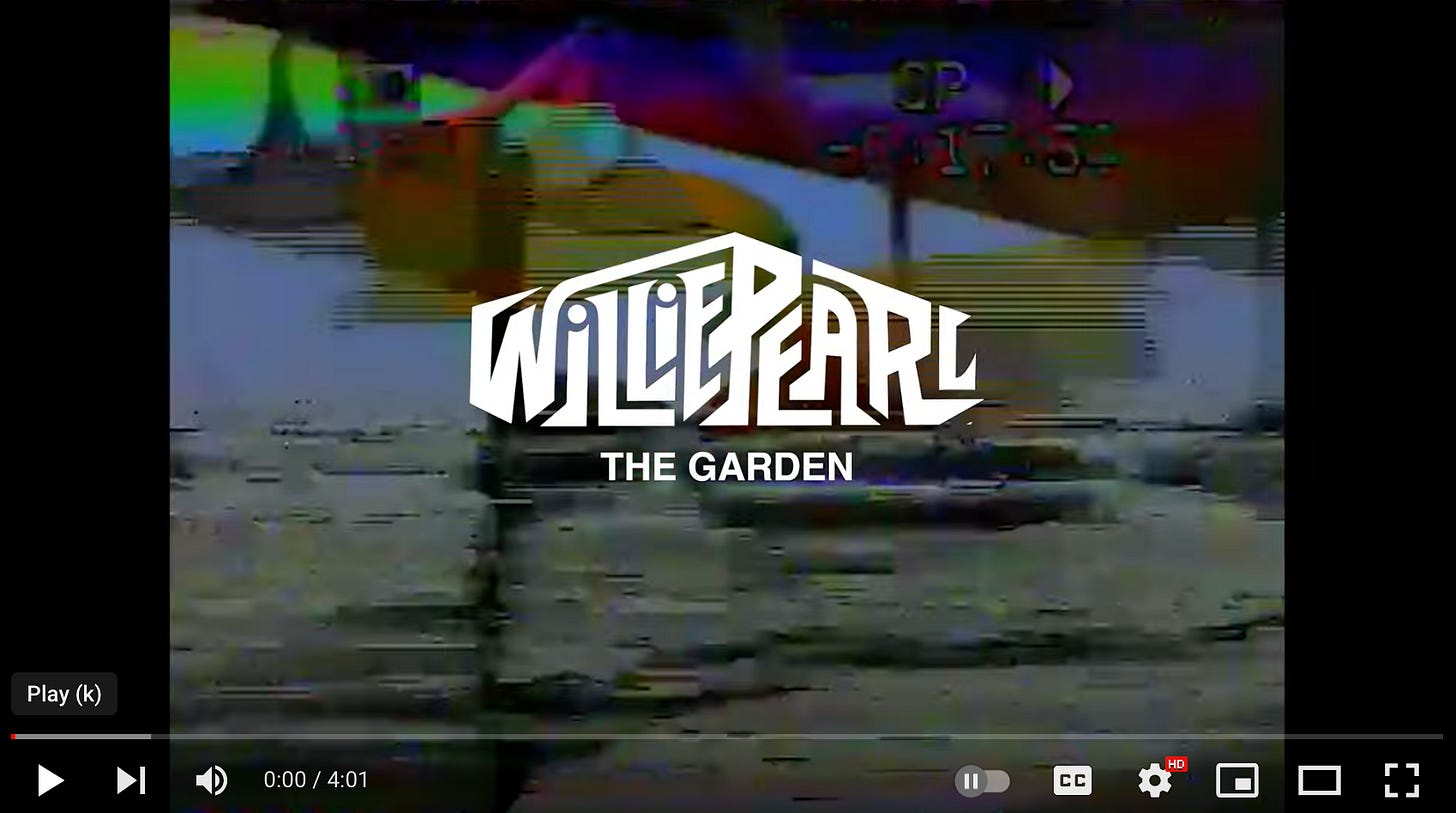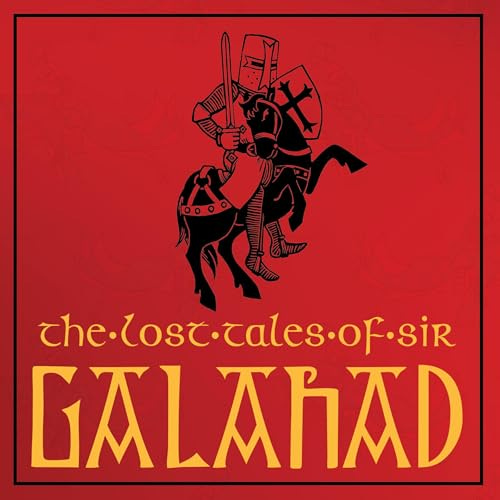Painting the Alligator Green
The joys (and pains) of self-consciousness. The vexations of misinformed critics.
Before getting into this week’s archived episode of The Habit Weekly (it originally ran in 2019), I wanted to mention two new things in the world that I’m especially excited about.
The first is a new song, “The Garden,” from Willie Pearl, a Nashville band that you should know about. The writer and lead singer on this song is our son Henry. The lead guitarist is our nephew Ben. And the garden in the song is our garden.
Secondly, I wanted to mention that there is now an excellent audiobook of The Lost Tales of Galahad, a collection that includes tales written by more than a dozen writers from The Habit Membership. The reader is Simon Vance.
And now, on with this week’s (archived) episode of The Habit Weekly.
When you put crayons and a piece of paper in front of a small child, she knows exactly what to do with them. She doesn’t get artist’s block. She doesn’t perseverate over whether or she has enough skill or whether she’s talented or whether she has earned the right to call herself an artist. She just puts crayon to paper and gets busy.
As we get older, almost all of us lose most of that creative freedom. We grow in self-consciousness, we learn self-doubt, and our exuberance in the mere act of making dissolves as we start to compare, as we are subjected to criticism.
I should point out, however, that the dawn of self-consciousness isn’t a bad thing for the artist. Yes, it can dampen our enthusiasm. But it also makes it possible for us to see that the pictures we’ve drawn aren’t as good as the pictures we want to draw, and the stories we’ve written aren’t as good as the stories we want to write. I’ve seen a lot of juvenile art on a lot of refrigerators. Most of it was pretty bad. I’ve read the poems I myself wrote when I was little. I’m sure my mother was proud of them at the time. But even she would have a hard time ginning up maternal pride if I were still writing poems like that. I have self-consciousness to thank for the fact that I decided I wanted to get better at writing.
I have written elsewhere about the writer’s need to make friends with the inner critic, and not just to silence or ignore it. On the other hand, we do need to learn to ignore a good many of our outer critics. So much of what we think of as the voice of self-criticism is really just the voice of some other critic—a teacher, a parent, a sibling, a classmate—that we have internalized so thoroughly that we have mistaken it for our own, or mistaken it for received wisdom. Even that might not be so terrible, except for the fact that critics so often don’t know what they’re talking about. There’s no licensure process in place to ensure that every teacher or older brother who criticizes and judges actually knows more than you do about what you are trying to do.
In a book-club I ran a while back, one of the readers told about a teacher who had scolded a little girl for coloring an alligator red instead of green. I don’t know why this teacher was bothered by the idea of a red alligator. I suspect she would say that red alligators don’t exist in the real world. True enough. But do you know what else doesn’t exist in the real world? GREEN alligators! Alligators are blackish-brown with maybe a hint of olive green, but decidedly not the green of a green crayon.
A teacher who insists that a student color her alligator green is not insisting that the student pay attention to reality (which would be an excellent place to start with art instruction). Instead, the teacher is insisting that the student conform to the conventional and more or less arbitrary notion that alligators are green.
To do creative work, we need more of the freedom and exuberance of childhood. But juvenile artists are free and exuberant precisely because they have no self-consciousness, no self-awareness, no inner critic. For a grown-up, that won’t do: even if it were possible to banish the inner critic, you wouldn’t want to. It’s the inner critic that points you toward better work and motivates you to love your reader and not merely to please yourself.
You may have seen this quotation from Ira Glass before; it gets passed around the Internet quite a bit. But I love what he has to say about the unease that comes from the realization that your work isn’t what you want it to be:
Nobody tells this to people who are beginners; I wish someone told me. All of us who do creative work, we get into it because we have good taste. But there is this gap. For the first couple years you make stuff, it’s just not that good. It’s trying to be good, it has potential, but it’s not. But your taste, the thing that got you into the game, is still killer. And your taste is why your work disappoints you. A lot of people never get past this phase, they quit. Most people I know who do interesting, creative work went through years of this. We know our work doesn’t have this special thing that we want it to have. We all go through this. And if you are just starting out or you are still in this phase, you gotta know its normal and the most important thing you can do is do a lot of work. Put yourself on a deadline so that every week you will finish one story. It is only by going through a volume of work that you will close that gap, and your work will be as good as your ambitions. And I took longer to figure out how to do this than anyone I’ve ever met. It’s gonna take awhile. It’s normal to take awhile. You’ve just gotta fight your way through.
The inner critic doesn’t have to kill the joy of creating. In fact, it can help you reclaim your childlike joy. But only if it’s your inner critic: your voice, your vision, the fire in your belly. There are a lot of voices rattling around in your head, but a lot of them probably aren’t yours. They have no relation to reality. They are telling you to color the alligator green.
In the same book-club conversation that I mentioned above, I asked the participants how they expressed creativity as children. One activity that kept coming up was tree-climbing. I had never thought of tree-climbing as a creative act, but the more I think about it, the more I think it is a great metaphor for the particular kind of joyful, individual vision that is still available to the writer long after dawn of self-consciousness. Matthew Cyr put it this way:
The idea of doing something so unnecessary, but that allows you to look out and down on the world from a different perspective, is surely a very creative thing that inspires more creativity. And adults generally don’t do it, or things similar to it. I never thought about this before but I think it’s more significant than I would have realized.
Yes and amen. How about you? I’d like to hear about your childhood creativity. Did you experience the diminishment of spontaneity and joy? Do you remember how? What are you doing to get some of that joy back?
Four-Week Online Workshops in October and November
This fall I'll be running two workshops—one for fiction and one for memoir/creative nonfiction. In these four-week intensives, you will work on a single story/essay/chapter (5000 words max) for the whole four weeks, writing and rewriting, getting feedback from me as well as from your fellow writers. You can work on something you’ve written already, or you can write something new for the workshop. Each workshop is limited to 6 participants. The fiction workshop will run 10/21-11/15, and the memoir/nonfiction workshop will run 11/4-12/6 (with a break the week of Thanksgiving).
Virtual Writing Rooms on Monday Tuesday, Thursday, and Friday
Tuesday afternoon: Writing with Dorothy Sayers (included in membership)
Writing Prompt: Writing with Dorothy Sayers exercise
Thursday Evening: Office Hours
New in The Habit Portfolio: “The Cracking of Bones Makes the Same Sound as Falling in Love,” a poem by Heather Cadenhead
Due Wednesday (Tomorrow): Submissions for The Habit Showcase
There's a place for you in this vibrant community of writers. Find out more about The Habit Membership here.
Carolyn Leiloglou on Between Flowers and Bones
Carolyn Leiloglou is the author of the middle grade fantasy series The Restorationists. Book Two of that series, Between Flowers and Bones, has been recently released. In this episode, Carolyn and I talk about writing about family, balancing motherhood with creative pursuits, and the ways that interacting with visual art enriches writing.
Here's a video of Carolyn in San Antonio's McNay Art Museum, referenced in the episode.









I actually never expressed much creativity as a child. That inner critic voice was too strong from a very young age. It changed when I listened to the outer critics, and found out most of them were imbeciles. One teacher said to my parents I was slow-witted and needed to go to a special education school (I went on doing DPhil at Oxford instead). Another one told me I was so uncoordinated I should consult a doctor (I'm a few marks off being top 12 in the world in ballroom dancing). I'm not saying they couldn't have been right, but I knew even then (and thankfully so did my parents) that there was something wrong with their assessments. It took me a while to understand where those critics were coming from, and a little more time to understand that my own inner voices weren't so different.
Anyway, it reminds me of Dylan Thomas's A Child's Christmas in Wales, when he lists the "Useless Presents": 'a painting book in which I could make the grass, the trees, the sea and the animals any colour I please, and still the dazzling sky-blue sheep are grazing in the red field under the rainbow-billed and pea-green birds.'
Huh. I'll have to ponder the "tree climbing" as creativity for a while. I always thought tree climbing was a rite of passage, but I was shocked as an adult when I met several people who had never climbed a tree and didn't allow their kids to climb trees. Meanwhile, my son was 30 feet up... =)